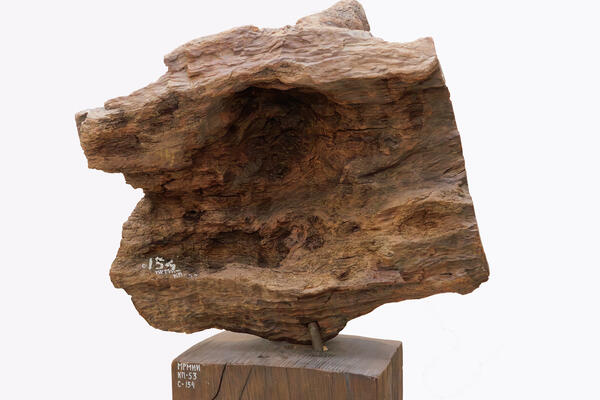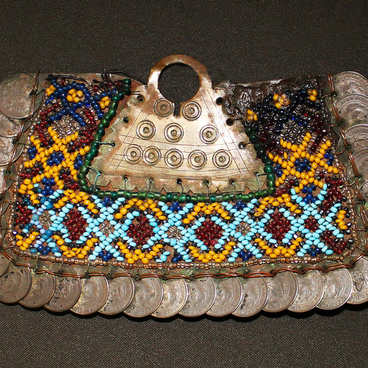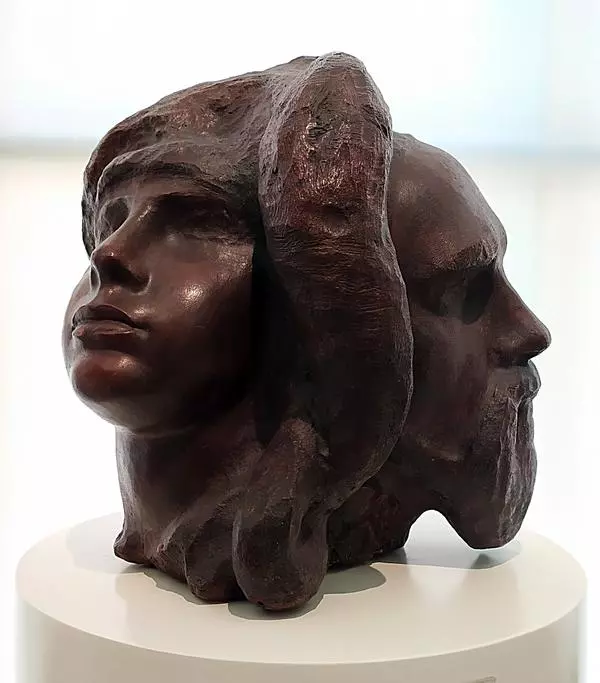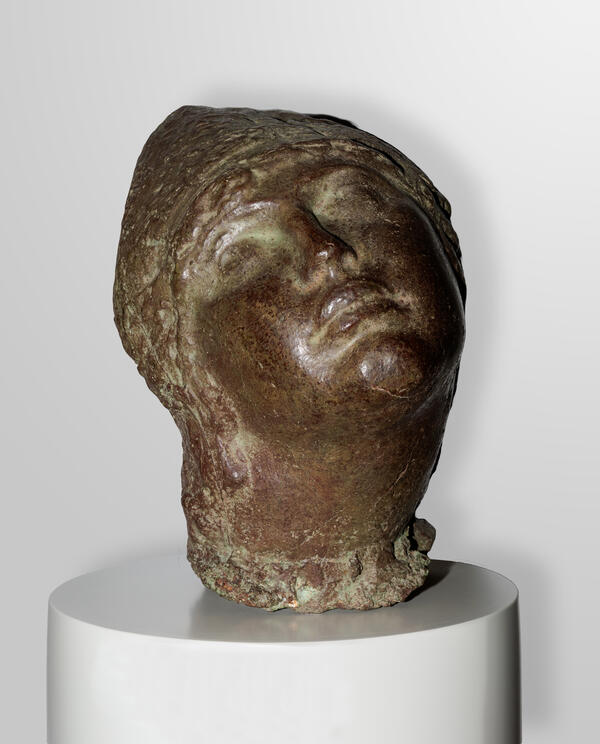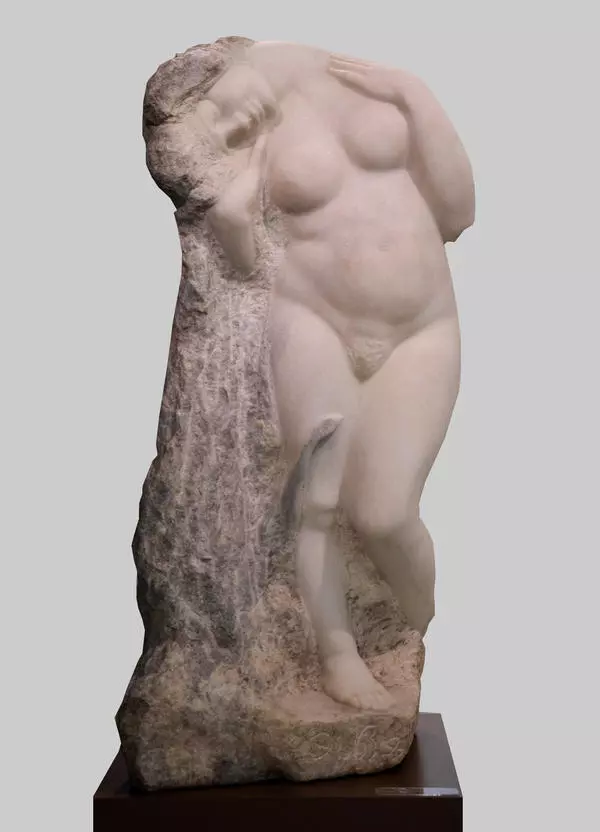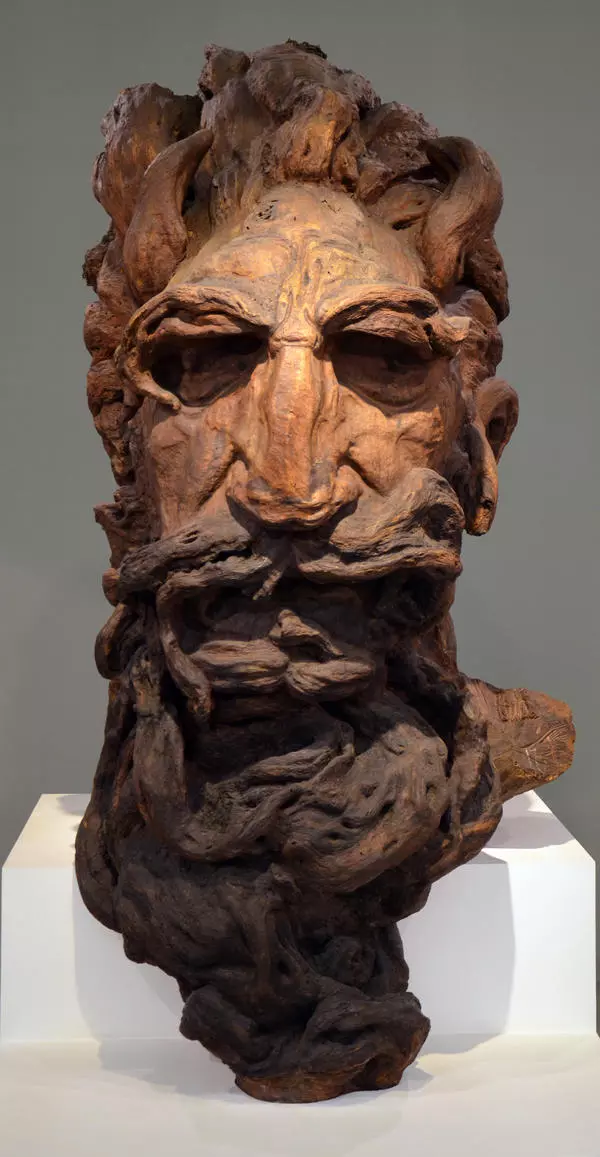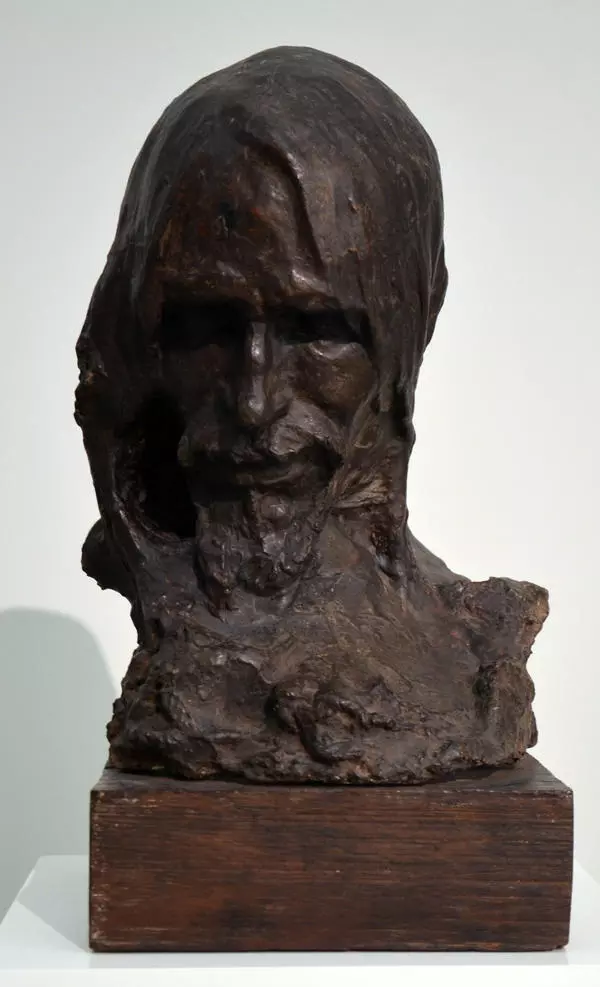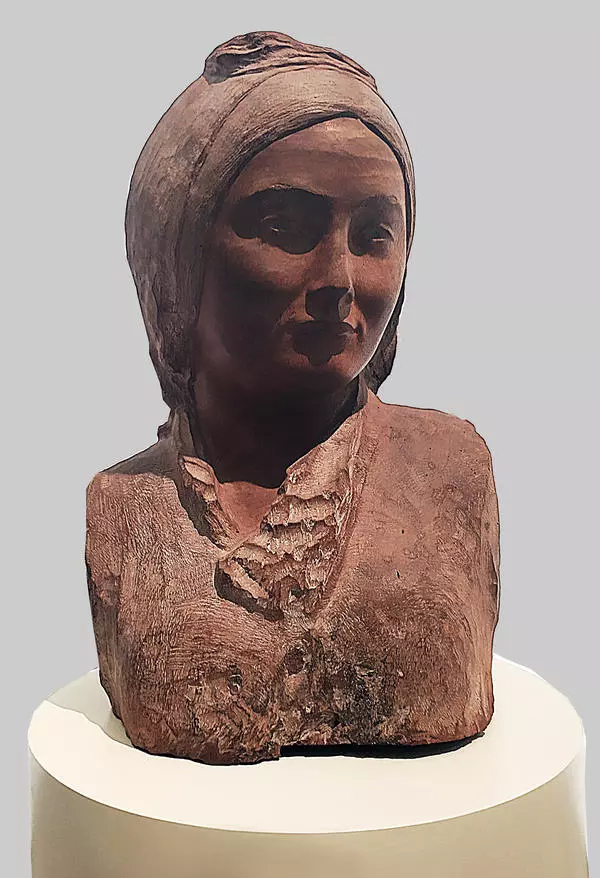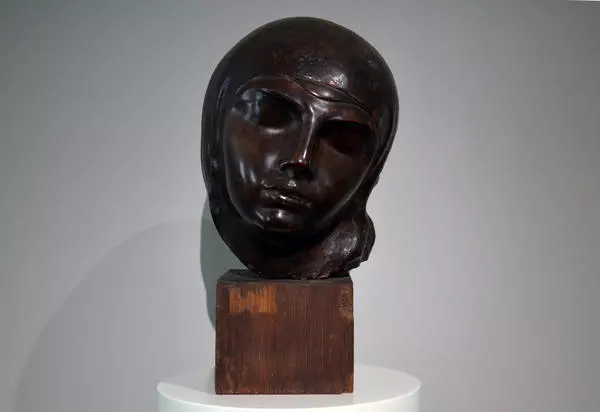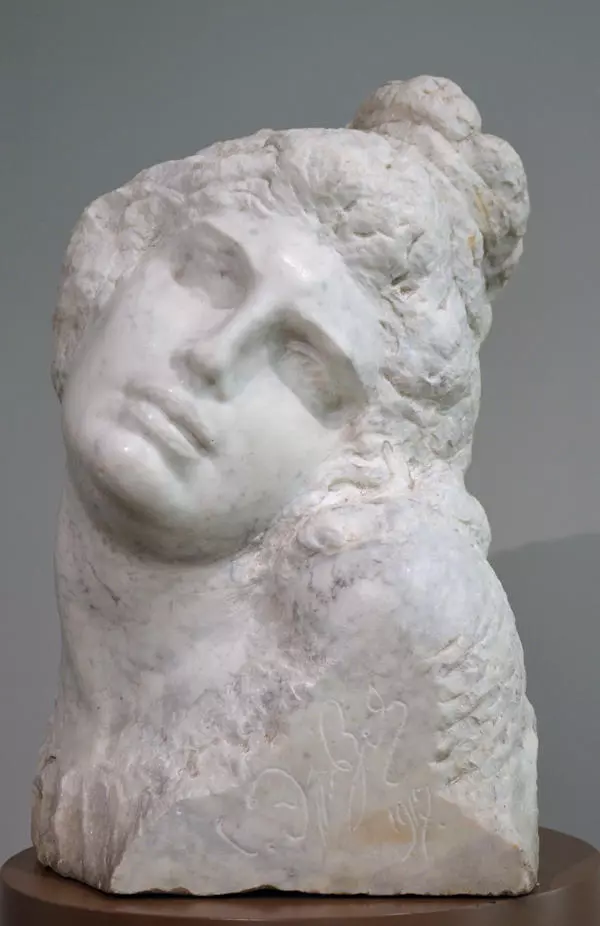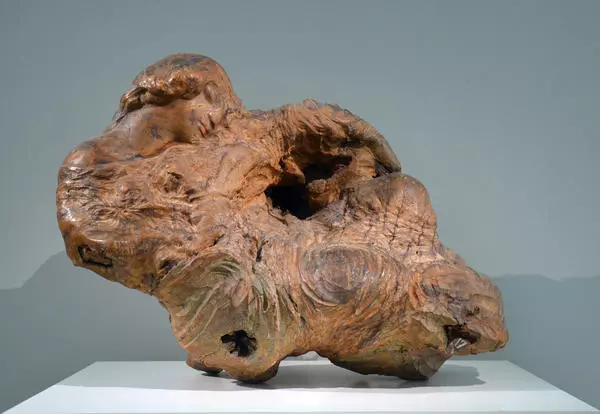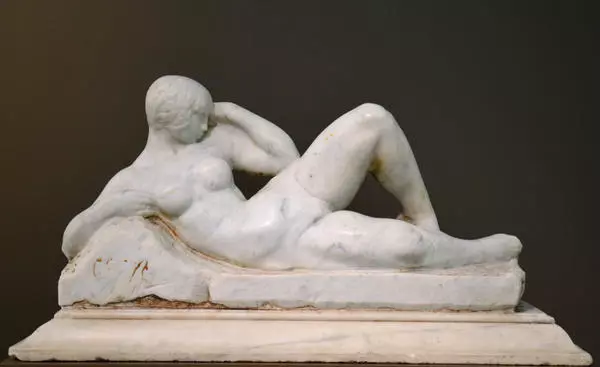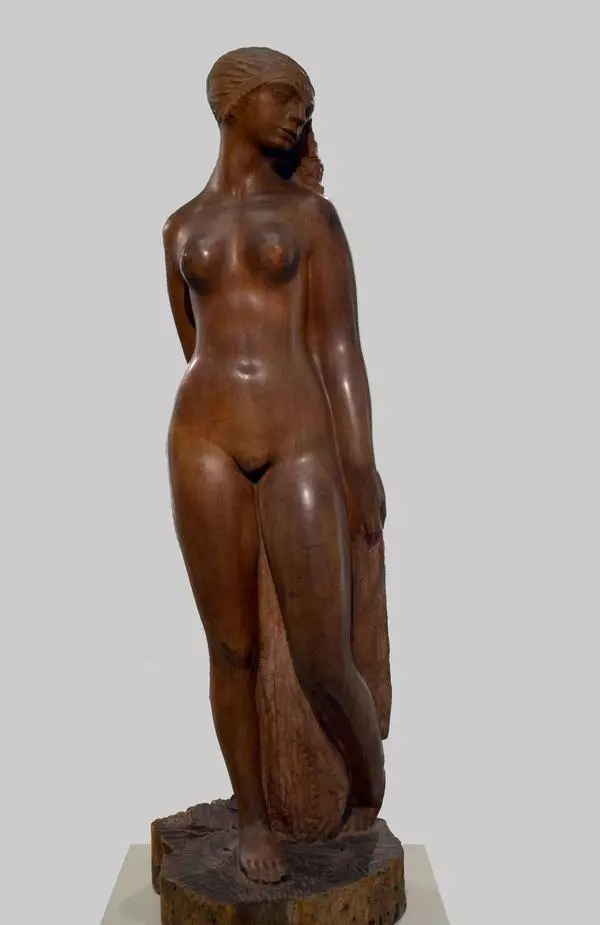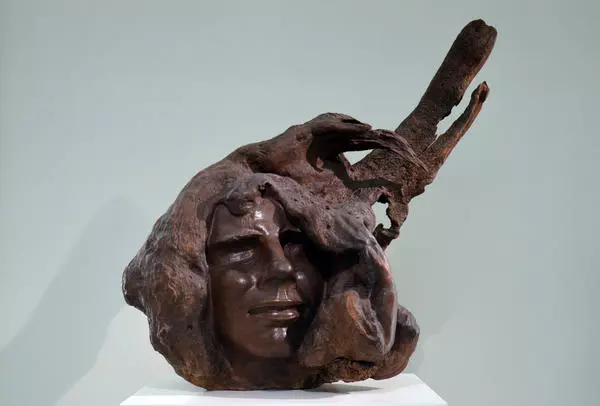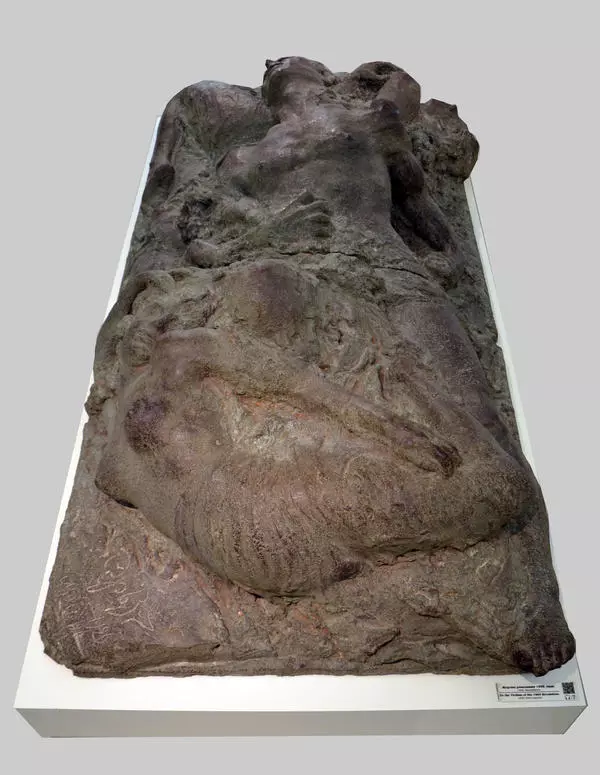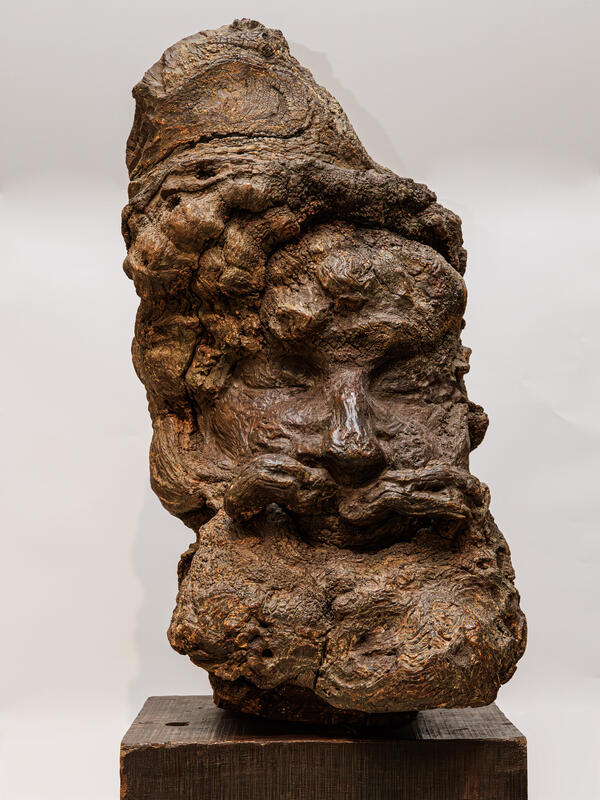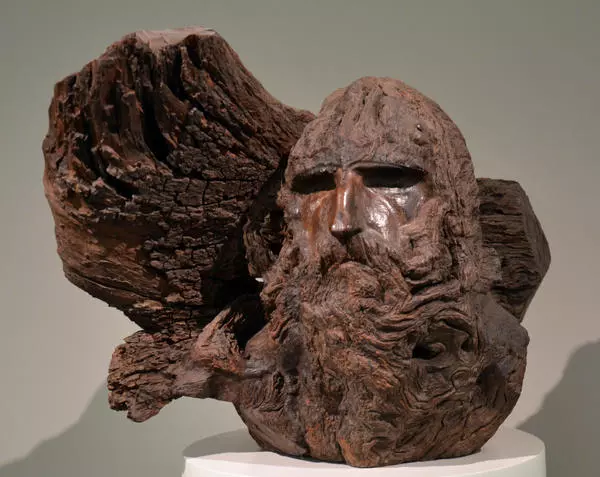Stepan Dmitrievich Erzia (real surname Nefyodov) was a Russian and Soviet sculptor, a master of wood sculpture, a representative of the Art Nouveau style. The most vivid, fruitful and unique period in his creative life was the Argentinian period.
The images of family and friends in the portrait gallery created by Stepan Erzia are distinguished by great warmth and love: “Portrait of the Sculptor’s Nephew” (1912), “Erzyanka” (1915), which many researchers believe to be the portrait of his sister Efimia, “Portrait of Mother” (1940), “Portrait of Father” (1944).
According to the memoirs of Yuri Paporov, a writer and journalist who in 1946–1950 worked as an attaché at the Soviet Embassy in Argentina and who did much to bring “maestro Erzia” back to his native land, Stepan Dmitrievich spoke of his parents with great gratitude and love. He recalled that his father had a habit of collecting and carrying home fancy roots, birch outgrowths and driftwood thrown onto the banks of the creeks by the springtime waters. This was what Stepan was fond of. Every time he looked closely at his father’s presents, he would see the outline of a human face, an animal or even a bird. Sometimes he took a knife, cut it a little and heard his parent’s praise. It was his father, who noticed the creative abilities of his son and sent him to a parochial school in the village of Altyshevо. After finishing school, the teacher Alexei Ivanovich Mikhailovsky advised the boy to continue his studies. His father supported this suggestion, sending Stepan first to Alatyr and then to Kazan. The long, difficult and bright artistic way of the Mordovian native, who became known to the world as “Erzia”, began with his work in the studio of the Kazan painter Kovalinsky.
Stepan Erzia lived and worked in Argentina from 1927 to 1950, and it was there that he first began to work with subtropical woods (quebracho, algarrobo, and urunday), which have a high wood density. The texture of the piece of quebracho chosen for the portrait of his father is interesting and unusual. Small untreated fragments that form the background space of the bas-relief, create the impression of arable land, on which the Mordovian peasant worked all his life. The image is blurred, the dear features come through as if through the haze of time and space: the high-cheekboned face, the slightly open mouth, the traditional Mordovian felt hat on his head. It is a memory portrait. Dmitry Ivanovich Nefyodov, the man who opened the way to art for his brilliant son, died in 1906. He was 66 years old.
The images of family and friends in the portrait gallery created by Stepan Erzia are distinguished by great warmth and love: “Portrait of the Sculptor’s Nephew” (1912), “Erzyanka” (1915), which many researchers believe to be the portrait of his sister Efimia, “Portrait of Mother” (1940), “Portrait of Father” (1944).
According to the memoirs of Yuri Paporov, a writer and journalist who in 1946–1950 worked as an attaché at the Soviet Embassy in Argentina and who did much to bring “maestro Erzia” back to his native land, Stepan Dmitrievich spoke of his parents with great gratitude and love. He recalled that his father had a habit of collecting and carrying home fancy roots, birch outgrowths and driftwood thrown onto the banks of the creeks by the springtime waters. This was what Stepan was fond of. Every time he looked closely at his father’s presents, he would see the outline of a human face, an animal or even a bird. Sometimes he took a knife, cut it a little and heard his parent’s praise. It was his father, who noticed the creative abilities of his son and sent him to a parochial school in the village of Altyshevо. After finishing school, the teacher Alexei Ivanovich Mikhailovsky advised the boy to continue his studies. His father supported this suggestion, sending Stepan first to Alatyr and then to Kazan. The long, difficult and bright artistic way of the Mordovian native, who became known to the world as “Erzia”, began with his work in the studio of the Kazan painter Kovalinsky.
Stepan Erzia lived and worked in Argentina from 1927 to 1950, and it was there that he first began to work with subtropical woods (quebracho, algarrobo, and urunday), which have a high wood density. The texture of the piece of quebracho chosen for the portrait of his father is interesting and unusual. Small untreated fragments that form the background space of the bas-relief, create the impression of arable land, on which the Mordovian peasant worked all his life. The image is blurred, the dear features come through as if through the haze of time and space: the high-cheekboned face, the slightly open mouth, the traditional Mordovian felt hat on his head. It is a memory portrait. Dmitry Ivanovich Nefyodov, the man who opened the way to art for his brilliant son, died in 1906. He was 66 years old.

